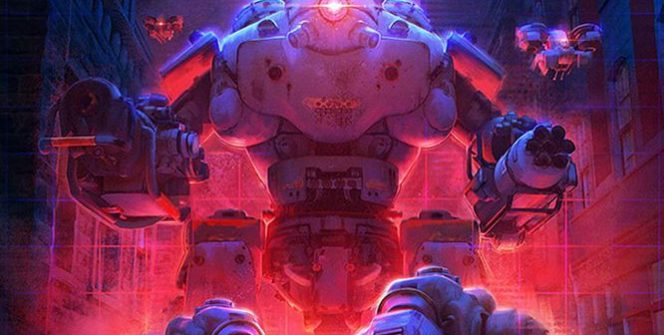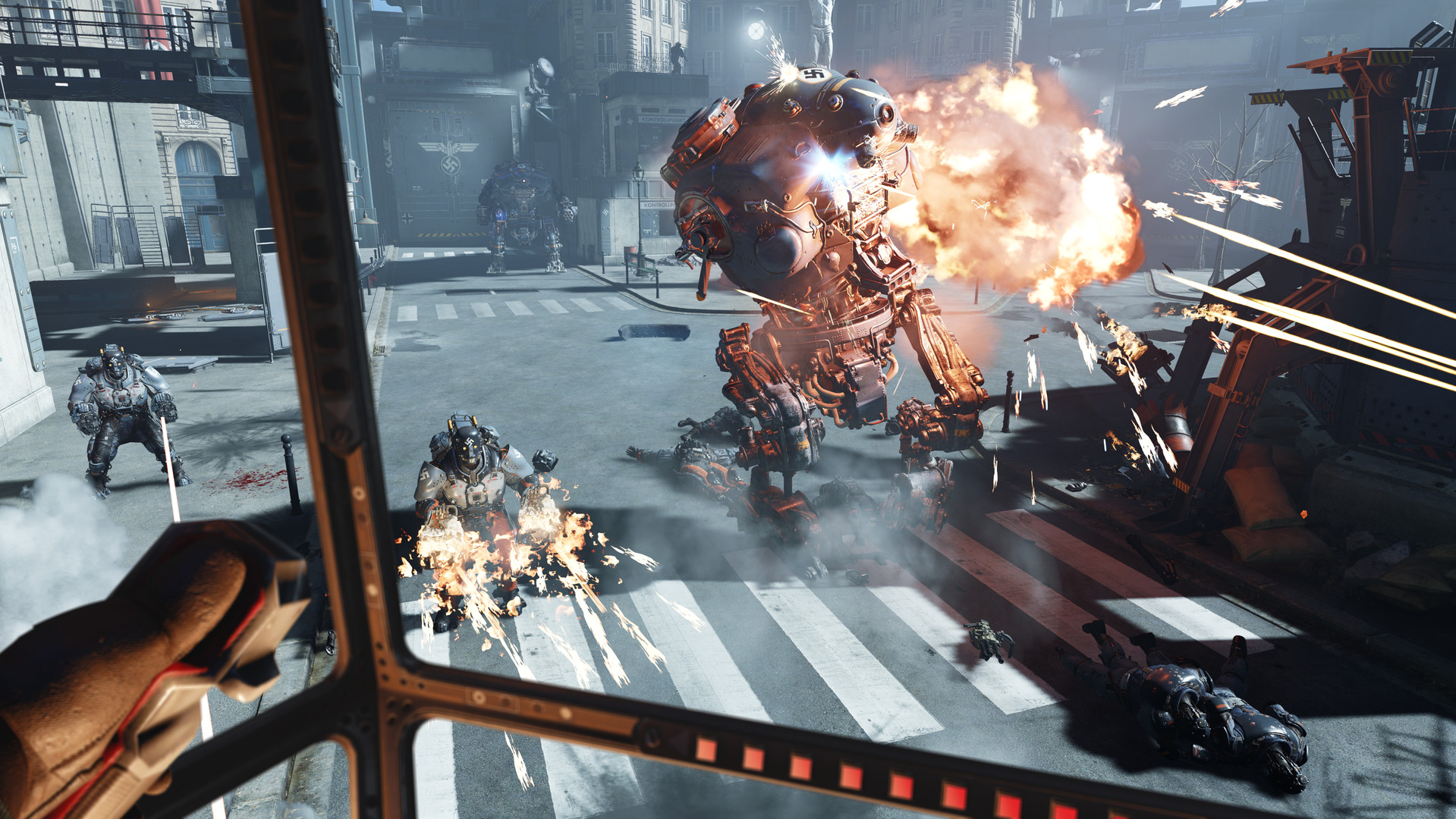REVIEW – With the mindset exclusively on the Virtual Reality of PS4 and PC, Bethesda and MachineGames create a subjective adventure full of tremendously intense action … while it lasts. Wolfenstein Cyberpilot analysis.
He has been begging for a while but has come twice. One of my sagas of recent subjective shooters, Wolfenstein, has returned with two distinct offers. On the one hand, we have Wolfenstein: Youngblood, title of which we already offered you a complete analysis a few days ago (and that, personally, I like his new game formula much less than the one offered yesterday). And then we also received Wolfenstein: Cyberpilot, a work that has been designed specifically for the different Virtual Reality devices, although I have only had access to the PSVR version. It is, of course, another purely FPS experience, but it’s game system is far from what has been integrated into the aforementioned Youngblood.
Before entering into the matter, its thing is to place the action, since as in every instalment of this franchise, history has a lot of interest and is being narrated progressively as we exceed the levels … and in perfect Spanish as well.
The action takes us to the early ’80s and we assume the role of hackers. As members of the French Resistance to the Nazi threat, we must reprogram the code of up to three different machines that the Resistance has stolen from German troops to control later on the battlefield. The script is well written and gives us numerous data about what is happening both in the French capital and in other locations, but it has a problem: the plot is too ephemeral to get to “explode” and engage completely. And that is because the adventure gives itself for a couple of hours only, this being precisely the main drawback of the title.
Piecework and stealth touch intense but very brief
The first thing we should do as soon as we integrate the Resistance ranks is to know their facilities. Its headquarters consists of four main floors, each dedicated to a specific function. The basement serves as a hangar and that is where we must reprogram the three machines. On the second floor is the conference room and it is the place where we usually receive most of the information related to the mission that we have to materialize. The third floor is the technology zone and, finally, the fourth is the place where the cabin is located that allows us to control the robots. And how do we access some plants and others? Well, in a simple way: by operating the corresponding lever that makes the chair in which we are sitting permanently ascend or descend from one floor to another.
Wolfenstein Cyberpilot‘s game system is quite simple but it has its grace, more than anything because before each mission we must make a series of preparations that bring more substance to the action. Reprogram the robots and hack their codes in the hangar, build weapons in the laboratory or practice in a training zone the basic controls of the machines are some of the tasks that we must perform before going out into the open field. All come to be a kind of small mini-games in which it is necessary to handle certain objects, which allows us to relax somewhat after the intense action offered by the levels themselves … especially those that have to do with two of the robots that we can control: the Panzerhund and the Zitadelle.
The Panzerhund is a kind of metallic dog that is capable of carrying both enemies (or large objects, cars included) as well as throwing fire. by mouth And, meanwhile, the Zitadelle is a tin beast that possesses incredible resistance and great offensive ability, and can even launch missiles. The development of the phases in which we control these two machines is very linear, it is necessary to advance through small-scale scenarios eliminating any rival that is put to shooting, there is a good variety of them: Nazi troops, mechanical robots, vehicles of war … We enjoy free movement to go from one place to another but, for those who are more sensitive to dizziness, they should know that because their movement is rather slow and the fact that we always follow the action from a cabin, everything is much softened in this sense.
However, all this that I just mentioned changes completely when we have to handle the robot that I like most of the three available: the drone. And because? Because the piecework action provided by the levels starring the two previous machines gives way to stealth, exploration and terminal hacking. As it is a much more fragile and small device, it can hardly receive impacts, so going to the bag and facing the Nazis face to face does not make much sense. On the other hand, we can use its great mobility and camouflage to go from one place to another quickly and to look for safer alternative paths, being able to also fulminate the adversaries that we catch off guard by means of their main weapon.
Thanks to the presence of the drone, the gameplay is quite balanced and ends up being gratifying, although, in my opinion, the action phases end up being too predictable in the global. But Cyberpilot’s main problem is the one I pointed out at the beginning of the analysis: its duration. In less than two hours (at the medium difficulty level) it is possible to overcome all the phases proposed by the title, very few. But that is not the worst since the replayability that shows this subjective shooter is rather null. Fortunately, it is a game that costs less than 20 euros, but regardless of that, I understand that the addition of some other level as well as meeting with additional modalities would have been relevant to give the necessary packaging to this, on the other hand, intense and immersive FPS adventure.
Yes, because everything else works very correctly, starting with the handling of the three robots from the DualShock 4, a control that I thought was very precise and that hardly presents detection problems.
It is also a title that has much higher production values than usual in these types of productions … at least those that make up the PSVR catalogue, which is the version I have tried, getting quite close (saving the distances) to the living in the outstanding Blood and Truth.
It has much higher production values The modelling of the robots is quite detailed, the appearance of the adversaries is at a similar level and the numerous special effects have been recreated with great success. The sets are more irregular, more than anything because the change in open environments to interior settings is noticeable, much more detailed in the latter.
The sound also performs at a good level, highlighting the aforementioned dubbing in Spanish, really sensational, as well as the thunderous sound effects. Of course, the soundtrack goes more unnoticed, but neither bothers.
-theGeek-
Pro:
+ Quite high production values
+ The drone phases offer a different experience
+ Looks great
Against:
– Two hours of play and little replayability
– Panzerhund and Zitadelle levels are too linear in general
– Nothing especially substantial
Publisher: Bethesda
Developer: MachineGames
Genre: VR action (HTC Vive, Oculus Rift and PlayStation VR)
Release date: July 26, 2019
Wolfenstein Cyberpilot
Gameplay - 5.8
Graphics - 7.9
Durability - 3.8
Zene/Audio - 7.4
Ambience - 6.3
6.2
FAIR
Supporting the launch of Wolfenstein: Youngblood, Bethesda brings us a game designed specifically for Virtual Reality. And the truth is that it is a little surprising title in the playable but more than entertaining, which allows us to take control of three machines quite different from each other, especially the drone. What happens is that Wolfenstein Cyberpilot only gives for two hours of play and, in addition, offers nothing especially substantial to repeat, so it is not a very replayable adventure.









![[TGA 2025] Tomb Raider: Legacy of Atlantis: Another Remake of the First Game! [VIDEO]](https://thegeek.games/wp-content/uploads/2025/12/theGeek-Tomb-Raider-Catalyst-Legacy-of-Atlantis-Remake-Crystal-Dynamics-302x180.jpg)








Leave a Reply